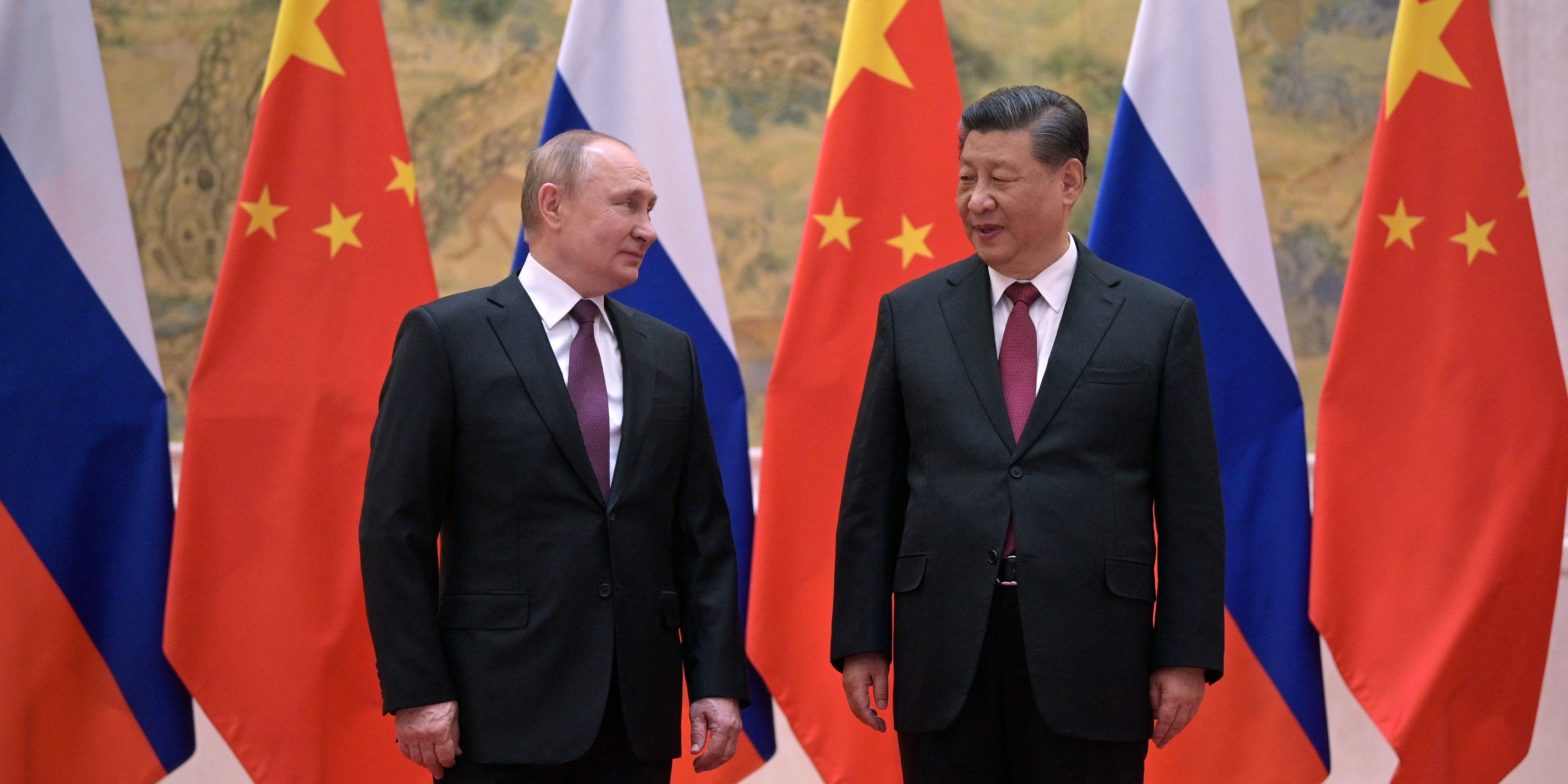The amount of Russian oil involved in “dark” ship-to-ship transfers has surged, according to Vortexa. Russian ships are increasingly turning off their trackers and offloading their crude onto China-bound vessels, it said. Sanctions on Russia over the Ukraine war have led to higher levels of secrecy in global oil markets, analysts say. Loading Something is loading.
The amount of Russian oil involved in “dark” ship-to-ship transfers has risen sharply over the last few months, as Western sanctions lead to higher levels of secrecy in global crude markets and a redirection of supplies towards Asia.
According to Vortexa, the volume of Russian crude moved via such transfers hit 182,000 barrels a day in the first 18 days of July, up dramatically from 44,000 barrels a day in June. The vast majority of the oil has been heading to China, the commodities data company told Insider.
In a ship-to-ship transfer, one vessel unloads its cargo into another while they’re at sea. When such a transfer is “dark”, it means at least one vessel has turned off the tracking signal that lets authorities see where it is.
Analysts at Vortexa said ships have been leaving Russia laden with the country’s oil, heading for the Atlantic and then offloading their cargo onto other vessels.
The growth in dark transfers is part of a general increase in secrecy in the global oil markets following Russia’s invasion of Ukraine in late February.
Western sanctions on Russia have made companies across the international economy wary of dealing with the country’s products. The US and UK have banned the import of Russian oil, while the European Union is planning to rapidly phase it out.
As a result of sanctions and “self-sanctioning” by European companies, Russia has redirected its crude oil exports toward Asia. In particular, India and China are snapping up Russian oil, which is trading at a discount on international markets.
According to Vortexa’s data, as of Monday there were four very-large crude carriers — or VLCCs — currently laden with Russian crude heading for Asia, having picked up their cargo from another ship in the Atlantic.
Lloyd’s List, a journal for the shipping industry, said this week that five “elderly” Chinese vessels have been at the center of the recent ship-to-ship transfers of Russian crude in the Atlantic. Commodities data company Kpler told Insider it is also seeing dark transfers take place, amid a jump in exports to Asia compared with prewar levels.
China’s reasons for taking Russian crude via dark ship-to-ship transfers are somewhat hard to fathom, said David Wech, chief economist at Vortexa.
“India just takes as much crude as they like, they don’t care,” he told Insider. He said sanctions don’t stop India or China from buying Russian crude.
However, Wech said Chinese and Russian companies might be practising, in case harsher sanctions are put in place.
Chinese companies may also want to avoid reputational damage, he suggested. Last month, the US’s top energy advisor urged India to limit its purchases of Russian oil and avoid hurting its international standing.
Wech said China’s big state companies are not involved in the dark transfers, which are largely carried out by smaller, independent companies founded recently.
Vortexa said last week that tankers that previously carried sanctioned Iranian crude are increasingly transporting Russian oil. It also said Russia, Iran and Venezuela — all countries suffering under the weight of US sanctions — are increasingly competing to sell their oil to India and China.
